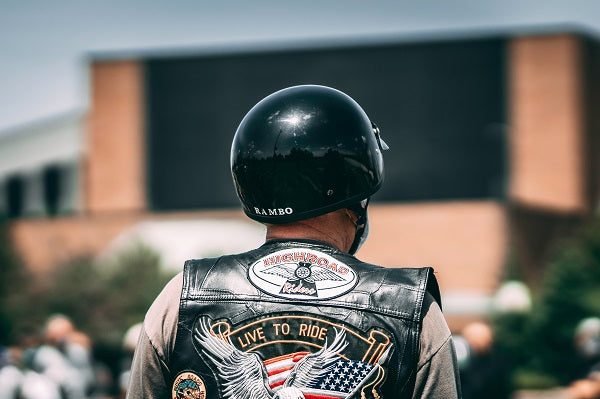Motorcycle helmets – they're not just a fashion statement or a legal requirement, they're a life-saving tool for bikers worldwide. But have you ever stopped to think, how well will a motorcycle helmet protect against head trauma? If you're someone who lives life on two wheels, it's a question you can't afford to ignore. In this comprehensive guide, we'll unpack the science behind the safety features of your motorcycle helmet, explore its role in protecting against head trauma, and debunk some myths along the way.

How well will a motorcycle helmet protect against head trauma?
A motorcycle helmet is your most important piece of safety gear when riding. It serves as the first line of defense in the event of an accident, absorbing impact and reducing the risk of head trauma. The key to its effectiveness lies in its multi-layered design, each contributing to the protection of one of the most vital organs - the brain.
Understanding Helmet Designs: A Journey from Outside to Inside
Motorcycle helmets come in various designs, but they share some common features. From the hard outer shell to the soft inner lining, each part plays a vital role in protecting against head trauma.
The Outer Shell: The First Line of Defense
The outer shell, made from materials such as polycarbonate, fiberglass composite, or carbon fiber, is designed to distribute the force of an impact over a larger area, reducing the potential for injury. It's also abrasion-resistant, which helps protect your head against road rash in a slide.
Impact-Absorbing Liner: The Shock Absorber
Just beneath the outer shell is a layer of dense, impact-absorbing foam. This liner works to slow down the head's deceleration during an impact, minimizing the potential for brain injury.
Comfort Padding and Retention System: Ensuring the Perfect Fit
The interior of the helmet features comfort padding that provides a snug fit, while the retention system (or chin strap) keeps the helmet securely in place during a crash.
The Role of Certifications: Ensuring Helmet Safety
While all helmets may look similar, they're not all created equal. Safety standards and certifications, such as those from the Department of Transportation (DOT) and the Snell Memorial Foundation, help ensure a helmet can provide effective protection.
The Helmet Lifespan: Knowing When It's Time for a Change
Even the best motorcycle helmets have a shelf life. Understanding when to replace your helmet can make a significant difference in the level of protection it provides.
Helmet Fit and Sizing: Why Getting It Right Is Crucial
Helmet fit and sizing play a crucial role in its protective capabilities. A helmet that's too loose or too tight can compromise its effectiveness, making proper fitting a vital aspect of motorcycle safety.
Exploring Different Helmet Types: Full-face, Open-face, and More
Different types of helmets offer varying levels of protection. From full-face helmets to open-face or half helmets, each style comes with its pros and cons when it comes to head trauma protection.
Myths and Misconceptions: Debunking Helmet-Related Fallacies
There are plenty of myths and misconceptions about motorcycle helmets that can lead to a false sense of security. Here, we'll debunk these fallacies, providing you with accurate, evidence-based information.
What the Statistics Say: Helmet Effectiveness in Numbers
Numerous studies and statistics underscore the effectiveness of helmets in reducing the severity of head trauma in motorcycle accidents. We'll delve into some of these figures to provide a clearer picture of just how crucial wearing a helmet can be.
Helmet Safety: Not Just About the Helmet
While helmets are integral to motorcycle safety, it's essential to understand that they are part of a comprehensive approach to safe riding.

FAQs
Do motorcycle helmets cause neck injuries?
While some argue that the weight of a helmet can cause neck injuries, scientific research suggests otherwise. In fact, wearing a helmet may reduce the risk of cervical spine injury in the event of a crash.
Can I still get a concussion even if I'm wearing a helmet?
Yes, a helmet doesn't make you immune to concussions. It can, however, reduce the severity of the injury.
Do all motorcycle helmets provide the same level of protection?
No, the level of protection varies depending on factors like the helmet's design, material, fit, and whether it meets safety standards.
Is it necessary to replace a helmet after an accident?
Yes, it is highly recommended to replace your helmet after an accident. Even if there are no visible signs of damage, the helmet's integrity may have been compromised.
How often should I replace my motorcycle helmet?
A general rule of thumb is to replace your helmet every five years or after a significant impact.
What's the most protective type of motorcycle helmet?
Full-face helmets provide the most protection, covering your entire face and head. They offer the highest level of protection against head and facial injuries.
Conclusion
The question, "How well will a motorcycle helmet protect against head trauma?" is a matter of life and death. As we've explored, helmets are an essential part of motorcycle safety, significantly reducing the risk and severity of head injuries. Remember, a helmet is not a guarantee against injury, but it's your best line of defense on the open road. So, always gear up, ride safely, and make every ride a journey to remember.
